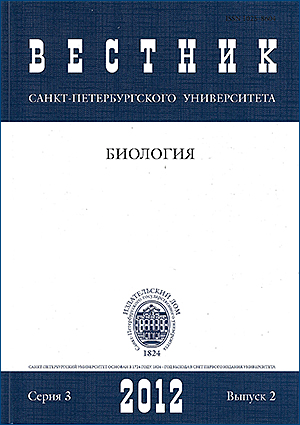Complex use of geochemical and palynological methods for detailed reconstruction of the natural conditions of landscapes in the Middle and Late Holocene
Abstract
This article is based on the results of a comprehensive study of the original post-glacial sediments of inland waters and wetlands of the Valaam island. The results of the detailed researches are sporovpollen and the geochemical diagrams, the analysis of which has allowed an in-depth reconstruction of the natural conditions of the studied landscapes in the Middle and Late Holocene. The method of palynoindication of the environmental quality has helped to facilitate process of detailed elaboration of natural conditions, especially on borders SB1/SB2 and SA1/SA2. Maximum concentration of the pathological pollen grains is registered on these borders. The geochemical analysis of the same sediments has allowed to allocate three basic stages in formation of deposits for this territory: I stage — an accumulation of the terrigene material with intensive concentration in sediments of the majority of studied chemical elements (SB1–SA2); II stage — a formation of organic sediments with a tendency to decrease concentration of terrigene microelemens and increase accumulation of P2O5, CaO, Sr and Ba (from SA2 to middle SA3); III stage — an accumulation of anthropogenous sediments that may be connected with transformations on a reservoir (final stage SA3) course of the multidirectional curve of studied elements. As a result we can show a complex use of palynological and geochemical methods which considerably facilitate reconstruction of sedimentation and detailed elaboration of the natural conditions of the landscapes in the Holocene.
Keywords:
reconstructions of the natural conditions, palynology, palynozones, palynoindication of the environmental quality, the Holocene, geochemistry, microelements
Downloads
Downloads
Published
How to Cite
Issue
Section
License
Articles of Biological Communications are open access distributed under the terms of the License Agreement with Saint Petersburg State University, which permits to the authors unrestricted distribution and self-archiving free of charge.





